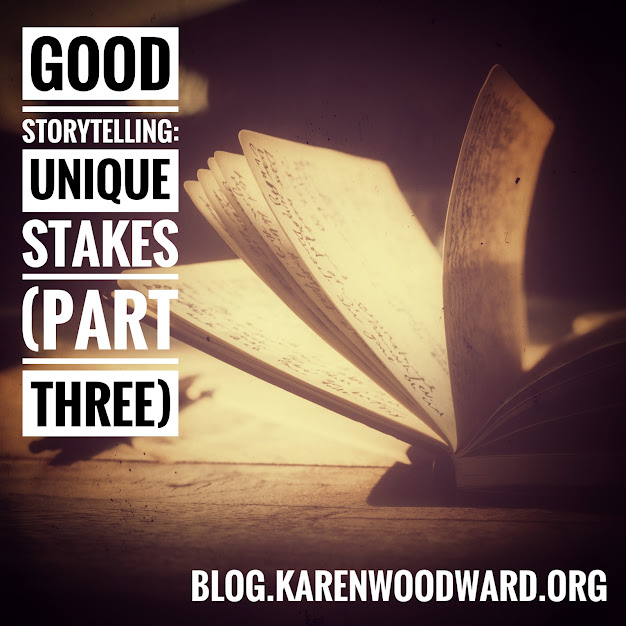How to Generate Conflict
Conflict results from the clash of two things: a character's goal and the opposition to that goal. It follows that every scene needs two opposing forces, in genre fiction these are usually a viewpoint character who wants something desperately and a force that prevents her from getting it.
Specific Goals
The protagonist should have a goal so specific you could take a picture of it. A desire for riches isn't a good goal because it's too general, too abstract. Wanting to win next month's million dollar lottery, though, is a fine goal. It even suggests ways to bring it about: buy a lottery ticket!
Instead of a character wanting to be rich, have them dream of graduating from Harvard Law at the top of their class. Instead of a character wanting love in her life, have her daydream of marrying Ernest Watly, the eccentric librarian who moved to town last year. Instead of a character wanting to travel, have postcards from locations all over the world taped to her walls and give her an abiding desire to see the Nazca Lines in Peru.
Opposition to the Goal
Something must oppose the hero reaching her goal.
What characteristics should the opposing force have? First and foremost, it must have the ability to prevent the hero from achieving his goal. Second, it must give the opposing force the ability to evoke the hero's deepest, darkest fears.
Indiana Jones’ antagonist, his opposing force, was Belloq. He managed to keep track of Indy’s activities and rob him of whatever artifact he sought. Also, when Belloq sealed Indy and Marion in with the Ark when they were in the Well of Souls, there were lots and lots of snakes, the creepy crawlies Indy was terrified of.
Luke Skywalker’s anatangost was his father, a sith, and his darkest fear was being seduced to the dark side of the force.
Stakes
I’ve written quite a lot about stakes in my “Good Storytelling” posts, I’ll leave links to them below.
Anyway. Stakes. This part is easy: the hero must have something to lose and something to gain.
To create suspense, the stakes of a conflict should be clearly spelled out in advance, before the hero is menaced by danger. If the hero achieves his goal, how will his life change? If he loses, what difference will that make?
In The Matrix Neo would have lost the love of Trinity as well as his life if he had not achieved his goal and become The One.
In Star Wars IV, if the resistance had lost and failed to destroy the Death Star then the resistance would have been snuffed out. Of course, the resistance won, the resistance survived and went on to topple the Empire.
Ticking Clock
To build tension it helps if the hero is racing against a clock, though perhaps not an actual clock. They must be under pressure. This both sets a deadline and gives the character time to plan, to agonize and, finally, to fight.
I know I’ve talked quite a bit about Star Wars IV but that was a good story. At the end Luke, and the entire resistance, are rushing against a ticking clock. The Death Star is powering up to destroy the planet that the resistance is based on. If the Death Star isn’t destroyed by then the resistance will blink out of existence.
Raise a Question
I’ve also talked about this in Writing a Genre Story: How to Create Suspense.
When we talk about creating suspense we are talking about an emotional state that exists within a reader. We generally try to evoke this emotional state by getting our readers to identify with our characters, especially our hero. We make it clear what the hero needs, as well as what he fears, and then we force the hero to face his darkest fears as he struggles to attain his goal.
Because the reader has identified with the hero they feel concerned for him and this keeps them turning pages to see whether the hero will succeed.
And it's effective. I've stayed up into the wee hours of the morning more times than I'd like to admit simply because I had to know what happened.
Well, Lee Child is a proponent of another, easier, way of creating suspense: simply raise a question. He even goes so far as to say that it doesn't especially matter whether your readers care about your characters, there is something about a question being raised that makes readers want to know the answer.
Photo Credit
FRANK IN STEIN by JD Hancock.
(BTW, I also write about this in How to write a genre story: how to create suspense.)
-- --
How to Write a Genre Story: The Index
Where you can find me on the web:
Twitter: @WoodwardKaren
Pinterest: @karenjwoodward
Instagram: @KarenWoodwardWriter





